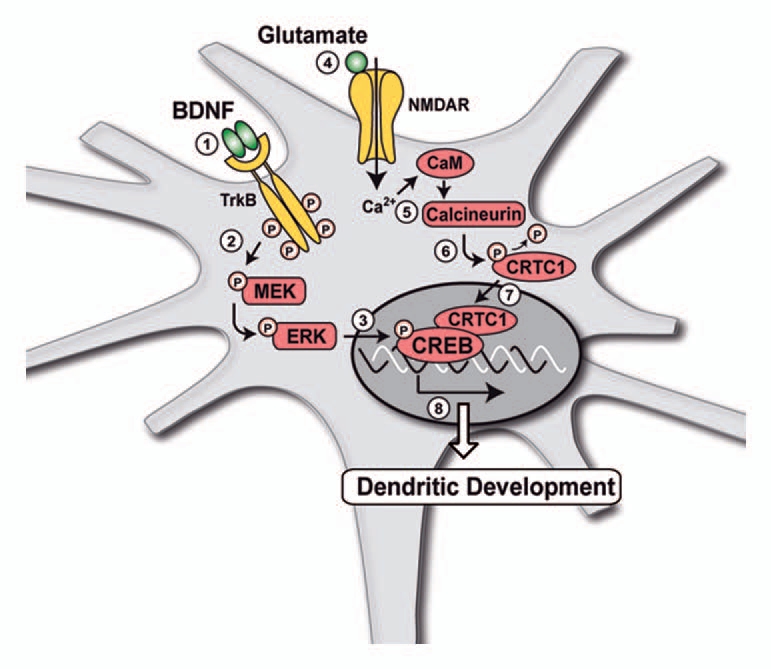Figure 1.

Schematic representation of the mechanisms underlying the effects of BDNF on dendritic development of cortical neurons. (1–3) Binding of BDNF to its receptor TrkB activates MAPK signalling pathway, resulting in the increased phosphorylation of the MEK and ERK kinases and the transcription factor CREB. However, phosphorylation of CREB is not sufficient for the regulation of dendritic development by BDNF, which also requires the nuclear translocation of the CREB coactivator CRTC1. (4–7) Nuclear translocation of CRTC1 is triggered by activation of NMDA receptors by glutamate, resulting in stimulation of the Ca2+/calmodulin (CaM)-dependent protein phosphatase calcineurin. Activation of calcineurin induces the dephosphorylation of CRTC1 and its translocation from the cytoplasm to the nucleus of cortical neurons. (8) Both the stimulation of CREB phosphorylation by BDNF and the induction of CRTC1 nuclear translocation by glutamate are required to increase cortical dendritic development.31
